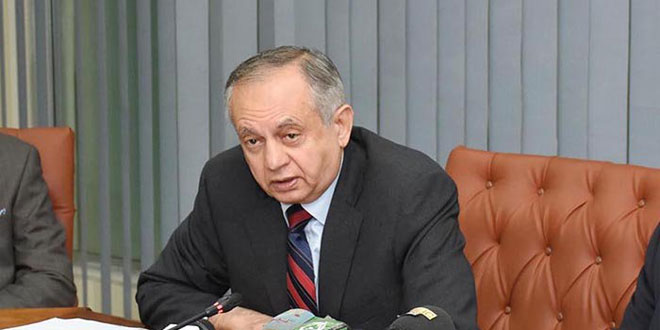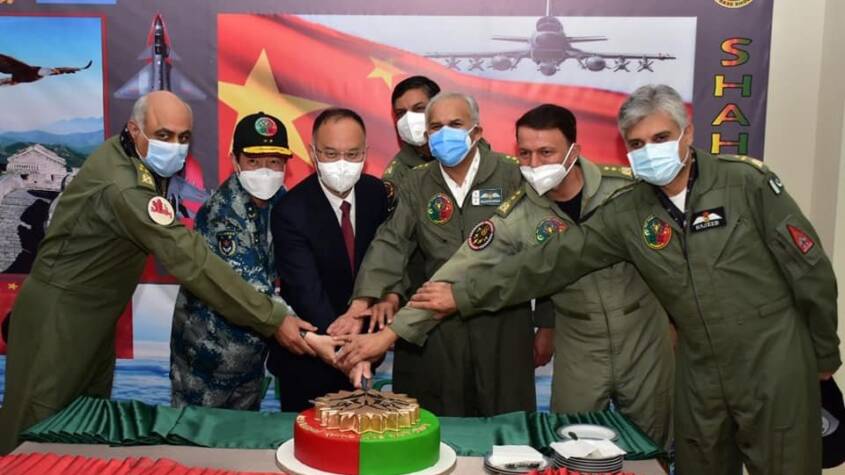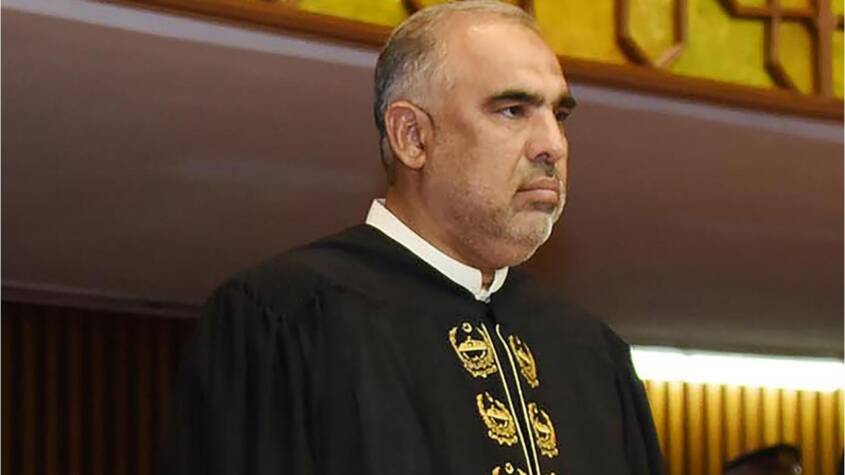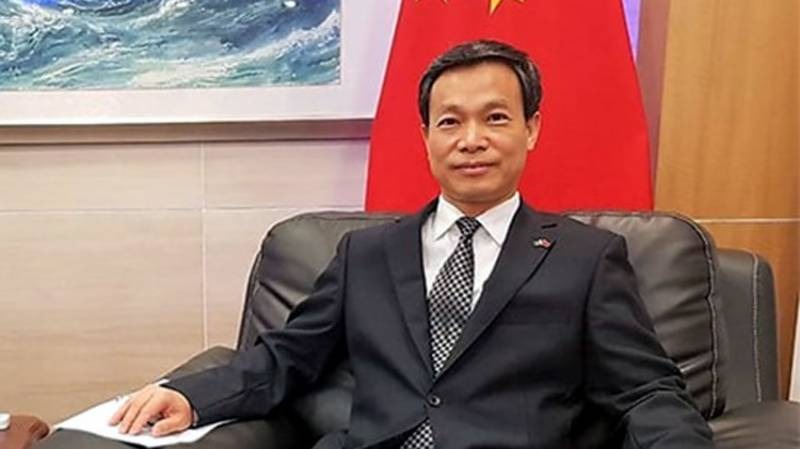Prime Minister’s Advisor on Commerce and Industry Abdul Razak Dawood said that the second China-Pakistan Economic Corridor phase aimed at import substitution and export-oriented industrialisation, supposed to be a game-changer, has yet to take off. Though agriculture is the backbone of the economy, the country is heavily dependent on imports of food items and primary produce like cotton. He mentioned that the pace of exports can only be sustained by production-led growth with a diversified industrial base and the modernisation of farming.
Despite the massive rupee devaluation, coupled with skewed liberal incentives in favour of capital-intensive large scale manufacturing industries and exports exceeding the $15 billion target marginally in the first half of the current year, the outlook for exports remains a source of concern for the policymakers.
“The main challenge for the government is to achieve a sustained pace of export growth,” says Prime Minister’s Advisor on Commerce and Industry Abdul Razak Dawood.
The immediate cause for concern is that month-on-month export earnings from textiles fell to $1.552bn in January 2022 from $1.736bn in November and $1.624bn in December 2021. Textiles contribute about 60 per cent of the total exports.
Exports are hamstrung by the lack of required diversified range of internationally competitive priced quality products. The bulk of trade surplus comes from the existing capacity of large scale export-oriented manufacturing industries which have been unable to move significantly from simple manufacturing to production of sophisticated goods.
The government is blamed by the industry for inconsistent policies, high utility prices, bureaucratic red tape and high cost of doing business though critics say that the sector is too heavily dependent on government support.
To increase trade surpluses, public policy is often geared to suppress domestic demand instead of first meeting the needs of people. That results quite often in a shortage of even essential commodities. The second China-Pakistan Economic Corridor phase aimed at import substitution and export-oriented industrialisation, supposed to be a game-changer, has yet to take off. Though agriculture is the backbone of the economy, the country is heavily dependent on imports of food items and primary produce like cotton. The pace of exports can only be sustained by production-led growth with a diversified industrial base and the modernisation of farming.
Announcing the Apparel and Textile Policy 2020-2025 approved by Cabinet, Mr Dawood said Pakistan has to go for value-addition and diversification. And the country has to move from textiles to other sectors.
The prime minister’s advisor did not directly respond to a question at his press conference about how industries other than textiles could secure markets abroad when the entire incentive regime including energy, tax exemption, subsidies and finance facility is focused on textiles, and if such incentives could generate better or worse output from other sectors.
The answer was provided recently by Commerce Secretary Sualeh Ahmad Faruqui while addressing a seminar. He informed the audience: “We have started analysing the government’s support schemes for the export sector and the conclusion is very clear that these schemes worked only for big players.” The country of this size, he added, should extend support to small- and medium-sized industries, women enterprises and non-traditional sectors. A former finance secretary, who has also served the incumbent government as an advisor, accused some export sectors of being rent-seekers.
The government’s bottom-up approach for balanced economic growth is at best working on the periphery. While the share of large scale manufacturing industry (LSMI) has increased in the overall size of the recently rebased economy, the share of the job-intensive industrial segment has reportedly dropped significantly.
The output of LSMI rose year-on-year by 7.4pc in July-December 2021-22 compared to July-December 2020-21 with the base year 2015-16 and 3.4pc on the base year 2005-06. Apparently, much of the growth in manufacturing can be attributed to better capacity utilisation and industrial consolidation rather than investments in greenfield projects.
Pakistan’s biggest weakness is that its 75pc exports are going to only 10 countries, says Mr Dawood. It may be stated here that low value-added simple manufactured products have a market in developed countries trying to keep the wages as low as possible. Then devaluation does away with the need to improve productivity. The exchange rate depreciation makes goods cheaper in dollars for foreign buyers and fetches more rupees for local exporters. Terms of trade worsen.
The low value-added goods are produced by low paid largely unskilled workers hired on contract with no career path. Professionals and skilled persons prefer to go abroad in search of a better career.
The external sector is coming under mounting pressure. The import bill for the first seven months of 2021-22 shot up to $46.62bn from $29.26bn over the same period of 2020-21. The overall trade deficit surged to $23bn during July-December 2021, up from $12bn in the same period last year.
The growth rate in remittances has dropped by 9.1pc from 24pc over the corresponding period of the previous year. Analysts say the net foreign direct investment (after deducting outflows) fell 50pc month-on-month in January and declined 11pc year-on-year during July-January.
The current account deficit has touched $9bn. Foreign debt has risen to unprecedented levels. Unsustainable debt servicing is the major reason for the cut in budgeted development spending.
The government is now amending the Fiscal Responsibility and Debt Limitation Act to extend the deadline for a sustainable debt level of 60pc of GDP to 2026-2027 against 2016-17 targeted earlier. The legal ceiling of the public debt-to-GDP ratio has not been observed either by PPP or PML-N but PTI borrowings have set a new record. The federal debt burden was reported at Rs11.8tr higher than the legally allowed limit set by the parliament.
The new draft law seeks to increase the limit of stock of outstanding guarantees to 10pc. Although there was no legal binding earlier on the maximum limit on stocks of sovereign guarantees, the government was limiting it to around 6pc of GDP under an International Monetary Fund imposed condition.
The National Assembly Standing Committee on Finance and Revenue (NA panel) was informed that the total public debt–to- GDP ratio stood at 72pc after rebasing the economy which has reportedly yet to be approved by all relevant forums. Before rebasing, the debt-to-GDP ratio was recorded at 83.5pc.
In line with the World Bank condition, an empowered debt management office will maintain authenticated public debt records, prepare annual debt reviews, annual borrowing plans, raise domestic and external debt and keep a record of sovereign guarantees. The new draft law has been unanimously approved by the NA panel.
















